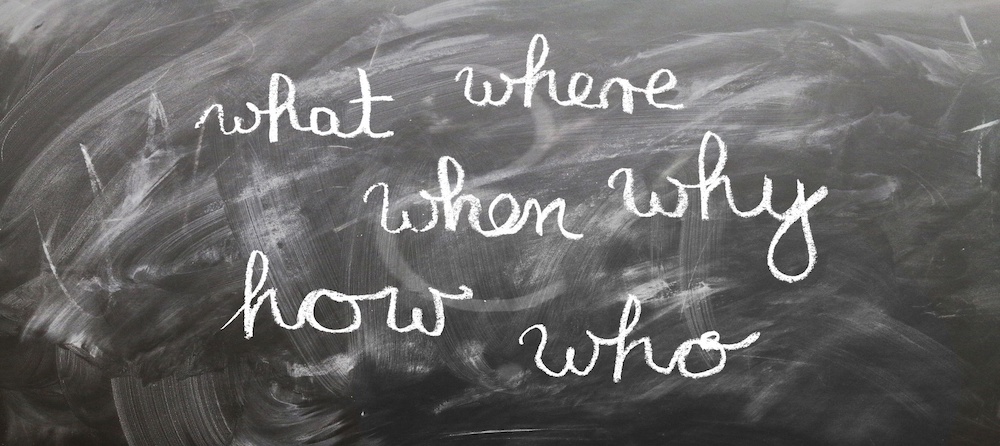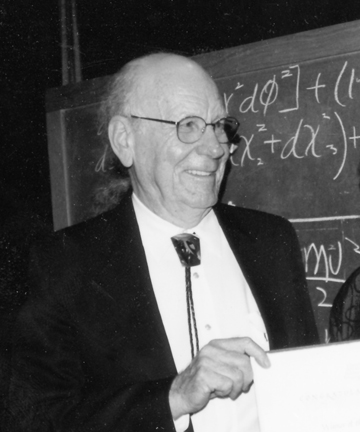
The 5 W’s of CASW

Every so often, science writers express curiosity and some puzzlement about the Council for the Advancement of Science Writing, what it does, who belongs to it, its origins and its relationship to the National Association of Science Writers. Perhaps the following explanation will help satisfy this curiosity.
To understand the CASW it helps to hark back to the state of science reporting in the late 1950s and early 1960s.
Science reporters, including experienced ones on the large metropolitan papers, found themselves having to whip out spot and feature stories on a plethora of unfamiliar scientific developments, often having no more than four or five hours to research and write a story.
No sooner had they become familiar with nuclear physics (the “bombs” and atomic reactors), vaccines against polio and surveys of American sex life than they had to dive into geophysics (for the first International Geophysical Year) and the science and engineering of rockets, satellites and space travel.
In the midst of these stories they were hearing about a strange molecule called DNA and such exotic concepts as genetic codes, nucleotides, and complementarity.
Meanwhile, they had to chronicle the first attempts at treating cancer with chemicals and try to keep readers abreast of raging controversies over quack cancer and arthritis cures and the statistics-laden battles over whether smoking causes cancer and whether dietary fat causes heart disease.
This was difficult enough for the experienced science reporters on the large newspapers and magazines, and although they did an amazingly competent job of coverage under the circumstances, few were satisfied that their stories were as good as they could be. But competent coverage of these areas was almost impossible for the newer reporters who had been flung into covering science by editors seeking to sate the reader appetite for science news that exploded in the wake of the Soviet Sputnik in the fall of 1957.
The result was that more and more newspapers, magazines ,and television networks began to run more and more science stories of less and less sophistication.
The impact on science writers was widespread. Many scientists in once-obscure fields were being approached for the first time by reporters, but seeing the naive and often inaccurate coverage of science and medicine, these scientists generally refused to risk talking to reporters, even the experienced science reporters.
The press was barred from meetings of several scientific and medical organizations. And there were hints that news stories like those that extolled krebiozan, laetrile, and other bits of quackery were costing science reporters their credibility with the reading public.
The birth of a nonprofit
The writers who were the most active in the NASW at the time realized something had to be done or their craft would soon drop to the level of police beat coverage.
Efforts were made to raise the prestige of NASW membership and make it a badge that would open more laboratory and meeting doors to science writers. But it was clear that an educational effort had to be launched among science writers themselves.
Unfortunately, projects to educate science writers required money which the NASW didn’t have and was unlikely to ever have. Notoriously tight-fisted publishers might help, but couldn’t be counted on for much. This meant that foundations, scientific societies and corporations would have to be approached for funds to finance any educational projects — the same foundations, societies and corporations that the science writers frequently covered.
Clearly, the NASW couldn’t solicit funds from the same people that its members covered without raising conflict-of-interest problems for the members (an “ethical” problem, incidentally, that didn’t seem to bother financial, travel, food and certain other writers in those days).
The solution was to set up a non-profit educational organization completely separate from the NASW. Several leading scientists who were also worried about the state of science reporting lent their support to forming such a organization. Following an NASW conference on the subject, the CASW was incorporated as a tax-exempt, 501(c)(3) educational organization and held its first meeting in January 1960.
Earl Ubell of the The Herald Tribune in New York was the first president, Hiller Krieghbaum, head of the science writing program at New York University was vice president, and Philadelphia freelancer Pierre Fraley was the first executive director.
Because many of the members of the Council were also highly active in the NASW, the CASW is frequently described as “a wholly disowned subsidiary of NASW.” Nevertheless, the Council is fully independent of the NASW. Membership in the Council is limited, currently to no more than 25 people, including active science reporters, scientists, and university writers and information officers.
The Council meets formally once a year, usually in the late spring in Washington, although members and committees get together informally at other times. The council is self-perpetuating in that new members are nominated and elected by current members. Terms are for three years, although many members have served several terms. Council members are not only unpaid volunteers but contribute from their own pockets to support unanticipated or underfunded projects.
A difference in perspective
From the Council’s beginning, there has been a subtle but key difference in the goals of NASW and CASW.
The purpose of the NASW is to serve the interests of its members, one way or the other. The CASW, on the other hand, is solely interested in improving the quality of science news coverage. The only formal link between the two organizations is the CASW’s subsidy of ScienceWriters, the NASW newsletter.
This subsidy began almost a decade ago when the NASW was in financial difficulty and couldn’t support the newsletter any longer. Even though the NASW is now in sound financial shape, the CASW has continued the subsidy on grounds that ScienceWriters is an excellent educational tool for students and fledging science reporters.
The Council’s biggest step toward permanence came when the National Science Foundation funded the New Horizons in Science Briefings for several years. The NSF required its grantees to accept a certain percentage of the grant for overhead.
This “overhead” provided a kind of core endowment that has helped keep the Council “alive” through the decades. (This endowment-like permanent fund was increased significantly when the trustees of the American Tentative Society, which was founded by three science writers, dissolved that foundation and passed its assets on to the Council.)
New Horizons in Science: The jewel in the crown
The New Horizons program was the Council’s first educational project, and it has proven to be its most successful, and largest, effort. It is hosted and funded each year by a major university.
The New Horizons briefing was—and still is—designed to ease the problems of science writers suddenly being faced with a breaking story in an unfamiliar field. Each year the New Horizons program director surveys the major scientific disciplines to gauge what developments might be newsworthy in the coming year or two. An articulate scientist active in each of these potentially newsy research areas is invited to give a talk to the attending science writers, stick around for questions and then socialize with the writers.
The hope is that when and if a story breaks the writers will not only have some background on the science but will know exactly whom to call and what to ask.
The first New Horizons briefing in 1963 was funded by the NSF and hosted by the American Academy of Arts and Sciences at its mansion-like headquarters outside of Boston.

That first briefing proved the value of the idea. The writers not only got a preview of anthropologists’ study of chimpanzees that Jane Goodall later made so famous, but they also heard a definitive and enlightening talk on the use and misuse of the bell curve to link IQ scores to race, a talk that proved useful to many of us for the next 30 years.
Since then the New Horizons program has backgrounded writers on a variety of developments that later became major stories, ranging from the imminence of an energy crisis, to the accumulation of greenhouse gases threatening global warming, to the use of embryo transfers to improve the breeding of livestock–not to mention such diverse subjects as heat-shock proteins, antibody diversity, gamma ray sources, quarks and the meaning of babies’ cries.
Originally, Council members took turns in organizing the New Horizons programs, but many found they lacked the time to put together the kind of program they wanted.
Thus, in 1975 the Council asked New York freelancer Ben Patrusky to take on the job regularly. His success was attested to by the tripling of annual attendance to about 150 writers. In 1987 Ben took on the job of executive director of the Council while continuing to organize the New Horizons program. That same year Diane McGurgan became the Council’s administrative secretary. In 2004, Ben handed the New Horizons reins to Paul Raeburn, former science editor of Associated Press, who, in accepting the role, was obliged to step down from his longtime board membership. Ben remains executive director, and New Horizons attendance remains healthy.
(Editor’s note: Ben Patrusky was named Executive Director Emeritus on Sept. 1, 2013. Rosalind Reid now serves as executive director and New Horizons program director. Diane McGurgan retired on June 1, 2018, and Sylvia Kantor now serves as administrator and communications manager.)
Other activities
Over the years the Council has held regional workshops for local reporters around the country on environmental issues and on issues of hospital care.
Books published under the Council’s auspices or with the help of the Council have included Guide to Careers in Science Writing; A Bibliography of Science Communications Programs; and the widely used News and Numbers handbook on understanding statistics used in science, written by Vic Cohn and statisticians at the Harvard School of Public Health, and published by the Iowa State University Press.
In a program funded by the Kellogg Foundation, the Council organized science writers’ tours of agriculture research in Latin America in 1991 and in Africa in 1995. It also organized a three-year-long program which allowed science writers to work as interns in various laboratories to get the “feel” of research.
The Council’s current educational efforts, in addition to the New Horizons briefings, include the Taylor/Blakeslee Fellowships for Graduate Study of Science Writing and the McGrady/Allard traveling fellowships, which allow reporters from small city newspapers to attend the New Horizons programs and other science-oriented meetings.
The Council has a “guru” program, in which experienced science reporters spend a day or so with a news outlet’s staff discussing science coverage; and a “brown bag” program in which science reporters sit down with the scientific staff at a major research institution and discuss relations between scientists and the press.
The Council’s programs are funded by its board members, various foundations, universities and occasionally a corporation. In each case, the Council insists that it, the Council, has the sole decision on the nature, content and composition of the program or project.
Proposals that appear to primarily serve the interest of the would-be sponsor have been repeatedly rejected.
The Council’s all-important “sustaining members” are the foundations, societies and corporations that keep the Council alive with annual “no- strings-attached” contributions to cover day-to-day operating expenses.